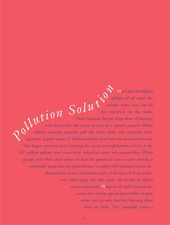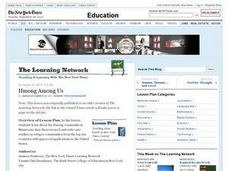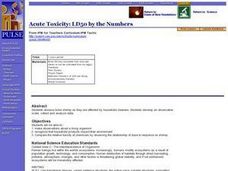Curated OER
Estuarine Habitats
Sixth graders study the important habitats, flora, fauna, and physical factors of coastal habitats. They compare the aquatic habitats to terrestrial habitats by researching and completing tables with the information.
Curated OER
Rivers And Capitals
Pupils become familiar with the use of GIS for research and become aware of the importance of rivers to cities. They also analyze the placement of cities and learn the names of rivers in the United States.
Curated OER
Got Park? Or if you build it, they will come!
High schoolers use GIS and GPS technology to evaluate, research, locate, and recommend where a new park should be located that benefit the community.
Curated OER
World Bank Development Project Funding
Students prepare a developmental proposal to the World Bank for use in a developing nation. They explain the structure and role of the World Bank. They analyze the organization of development projects.
Curated OER
Very Big Company
Students describe the problems of political independence without economic independence. They evaluate the natural resources, human resources and industrial resources of a country and make economic decisions. They evaluate strengths and...
Curated OER
Continuity and Change in Africa
Young scholars become more informed about a country on the African Continent. They are more informed about the socio-political and socio-historical events within a selected country. This is done by performing research.
Curated OER
Community Service Through Art: Empty Bowls
Fifth graders become more aware of the worldwide poverty issues. Through reading books, they can get a feeling for what the daily life of a person who lives in poverty is like. The research skills studied can be used in different subjects.
Curated OER
Pollution Solution
Fourth graders examine how trees help to absorb the pollution that is emitted from automobiles. They review the process of photosynthesis and determine how forest management is important on their reservation. They think about the...
Curated OER
Can Diseases be Prevented?
Students write a research paper on a disease based on their internet or library research. They are asked to create a Public Service Announcement. Students must comprehend as much as possible about diseases that have affected society in...
Curated OER
Conserving Marine Life
Pupils discuss the different threats to various marine life. Through research, groups examine threats to specific marine life, evaluate the situation, and develop possible solutions to help marine life regain stability. Conservation...
Curated OER
Indiana Tornado Project
Students become familiar with the use of GIS for research, natural phenomena in Indiana, and analyzing collected information.
Curated OER
Hmong Among Us
Pupils examine the Hmong community in Minnesota, then research and write case studies on refugee communities from the top ten countries with approved applications to the U.S. They write first-person stories from the perspective of refugees.
Curated OER
Londoners Calm Despite Bomb Blasts
Students investigate Great Britain's landscapes, government and culture to help them explain why a bomb blast in its subways or to its transportation system is important.
Curated OER
The Arctic and Taiga Ecozone of Canada
Students discover the differences in the Arctic and Taiga regions of Canada. They identify physical and human characteristics of both region. They also practice using an atlas.
Curated OER
Post-War Japan
Students research the conditions of post-war Japan. In groups, they examine the plans that were put into place for the country and identify the attitude of the Allies. To end the lesson, they discuss the changes that came about in their...
Curated OER
Where Is Hoku?
Young scholars are introduced to map making and reading. Using maps, they identify the cardinal directions and discuss the importance of a legend. They analyze the human characteristics of the classroom and create overhead view maps of...
Curated OER
America the Beautiful
Young scholars listen to a read-aloud discussing the landmarks of the United States. In pairs, they use the internet to research a landmark of their choice. They create a visual aid to be given with a presentation sharing the...
Curated OER
The Effect of Medications on Daphnia
High schoolers explore how human beings affect the world's ecosystem by examining the affects of medication on daphnia, a small freshwater organism very sensitive to pollution. Students use a computer model to repeat the experiment and...
Curated OER
International Summit on Asia
Learners consider different aspects of Asia to determine which Asian country they think would be the best location for the American business development. They engage in a series of lessons designed to examine regions of Asia,...
Curated OER
The Arctic and Taiga Ecozone of Canada
Students examine the various sub-regions of the Arctic and Taiga zones in Canada. Using the online Canadian Atlas, they locate and describe the characteristics of each zone. They organize their information into a chart and share it with...
Curated OER
Why do we need Vitamin C in our diet? Or Why do we carry old inactive genes in our genome?
Students explore and explain how mutations in the DNA sequence of a gene may be silent or result in phenotypic change in an organism and in its offspring. They analyze how evolution and biodiversity are the result of genetic changes that...
Curated OER
Islam in America
Students examine the cultural and religious diversity within the United States. Using the differences, they discover they are a source of growth and change as well as conflict. They identify the changes that occur when new immigrants...
Curated OER
Acute Toxicity: LD50 by the Numbers
Students observe brine shrimp as they are affected by household cleaners, develop observation scale, collect and analyze data, and discuss how household products and pesticides negatively impact environment.
Curated OER
Aphids and Ladybirds
Students record observations of ladybird beetles and aphids. They develop questions concerning the behavior of ladybird beetles and aphids that are testable by a classroom experimentation. Students develop an investigation.

























